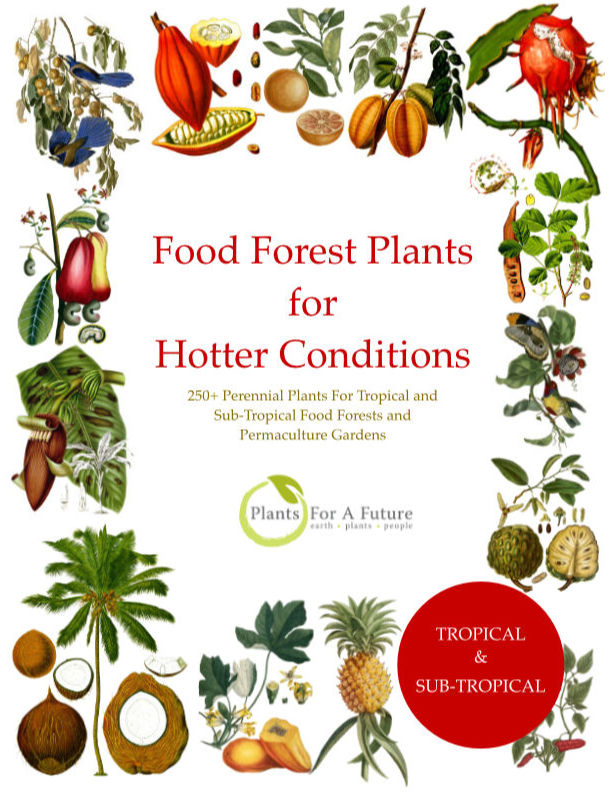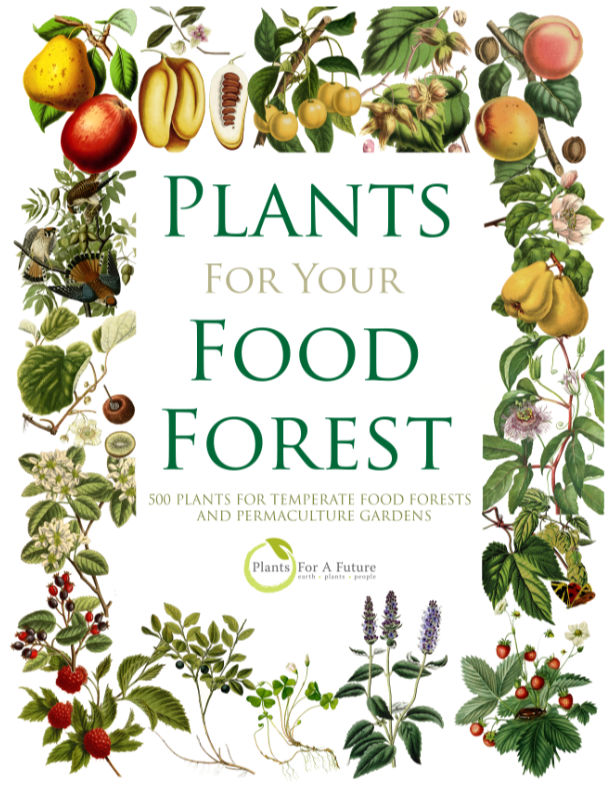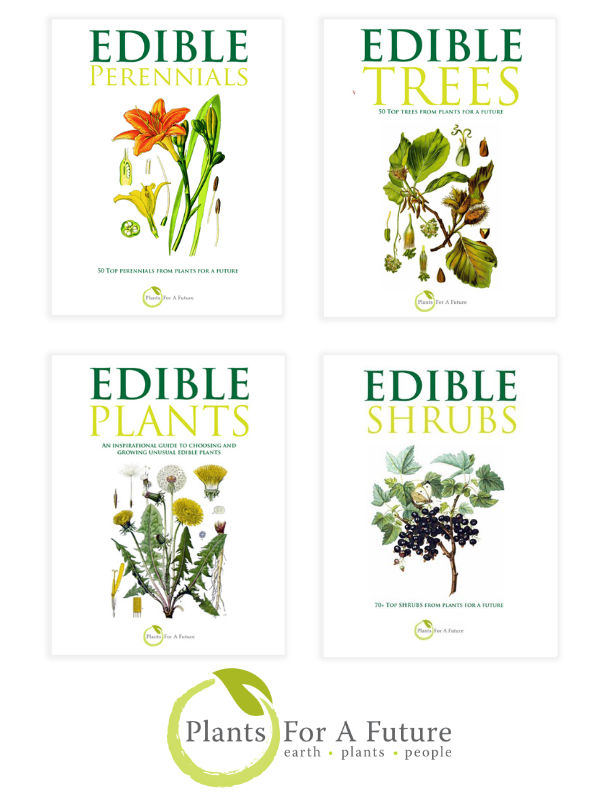Translate this page:
Summary
Sicilian Sumac (R. coriaria) immature fruits are a caper substitute. The crushed fruit, mixed with Origanum syriacum, is a principal ingredient of 'Zatar', a popular spice mixture in the Middle East with a tangy, lemony flavour. The seed is an appetiser, similar to mustard. Sicilian Sumac is native to Macaronesia, Medit. to Afghanistan, including Algeria, Azores, Canary Is., Cyprus, France, Greece, Iran, Iraq, Italy, Madeira, Morocco, Portugal, Sicilia, Spain, and Turkey. Rhus species are hardy, drought-tolerant shrubs or small trees that thrive in dry, hot environments. They tolerate poor, rocky, and well-drained soils and do well in alkaline or slightly acidic soils. Once established, most Rhus species are highly drought-tolerant; they like full sun but tolerate partial shade. Rhus species are excellent for attracting wildlife, including birds drawn to the bright red berries. They also support many pollinators and provide animal habitat.
Physical Characteristics

 Rhus coriaria is a deciduous Shrub growing to 3 m (9ft 10in) at a medium rate.
Rhus coriaria is a deciduous Shrub growing to 3 m (9ft 10in) at a medium rate.
See above for USDA hardiness. It is hardy to UK zone 9 and is frost tender. It is in flower from July to August. The species is hermaphrodite (has both male and female organs) and is pollinated by Bees. The plant is self-fertile.
It is noted for attracting wildlife.
Suitable for: light (sandy), medium (loamy) and heavy (clay) soils and prefers well-drained soil. Suitable pH: mildly acid, neutral and basic (mildly alkaline) soils. It cannot grow in the shade. It prefers dry or moist soil.
UK Hardiness Map
US Hardiness Map
Synonyms
Plant Habitats
Woodland Garden Sunny Edge;
Edible Uses
Edible Parts: Fruit Oil
Edible Uses: Condiment Oil
The immature fruits are used as caper substitutes[2, 89, 142, 183]. Some caution is advised, see the notes above on toxicity. The crushed fruit, mixed with Origanum syriacum, is a principal ingredient of 'Zatar', a popular spice mixture used in the Middle East[183]. The seed is used as an appetizer in a similar manner to mustard[2].
References More on Edible Uses
Medicinal Uses
Plants For A Future can not take any responsibility for any adverse effects from the use of plants. Always seek advice from a professional before using a plant medicinally.
Astringent Diuretic Dysentery Styptic Tonic
The leaves and the seeds are astringent, diuretic, styptic and tonic[4, 240]. They are used in the treatment of dysentery, haemoptysis and conjunctivitis[240]. The seeds are eaten before a meal in order to provoke an appetite[4]. Some caution is advised in the use of the leaves and stems of this plant, see the notes above on toxicity.
References More on Medicinal Uses
The Bookshop: Edible Plant Books
Our Latest books on Perennial Plants For Food Forests and Permaculture Gardens in paperback or digital formats.

Edible Tropical Plants
Food Forest Plants for Hotter Conditions: 250+ Plants For Tropical Food Forests & Permaculture Gardens.
More

Edible Temperate Plants
Plants for Your Food Forest: 500 Plants for Temperate Food Forests & Permaculture Gardens.
More

More Books
PFAF have eight books available in paperback and digital formats. Browse the shop for more information.
Shop Now
Other Uses
Dye Mordant Oil Tannin
Agroforestry uses: Sumac can be used for erosion control, as a nitrogen-fixing plant, and for hedges or borders. Its dense growth habit provides cover and habitat for wildlife. The leaves and bark are rich in tannin[4]. The leaves can be collected as they fall in the autumn and used as a brown dye or as a mordant[169]. The fruit and bark are also used[148]. The leaves contain 20 - 35% tannin[171] and yield a yellow dye[89]. The finely ground leaves and stems provide the dyeing and tanning agent 'sumac'[171]. The shoots are cut down annually, near to the root, for this purpose[4]. A fawn colour, bordering on green, is obtained and this can be improved with the judicious use of mordants[4]. The cultivar 'Mesculino' is very rich in tannin, containing up to 35%[46, 61]. An oil is extracted from the seeds[4]. It attains a tallow-like consistency on standing and is used to make candles. These burn brilliantly, though they emit a pungent smoke[4]. A black dye is obtained from the fruit[4, 14]. A yellow and a red dye are obtained from the bark[100]. 1. Nectary - Flowers rich in nectar and pollen:
Yes – Sumac flowers produce nectar and pollen, attracting pollinators such as bees, wasps, and butterflies.
2. Wildlife - Food (Fruit, Seeds, Leaf litter, Shelter, Nesting, Roosting):
Yes – Sumac provides food for wildlife through its clusters of red, berry-like fruits, which are eaten by birds and small mammals. The dense, shrubby form also offers shelter and nesting sites for birds.
3. Invertebrate Shelter (Overwintering sites, Leaf litter, Groundcover):
Yes – Sumac’s fallen leaf litter provides habitat for invertebrates, and its dense structure can act as shelter for overwintering insects and groundcover.
4. Pest Confuser (Smell):
No – Sumac does not have a strong aromatic smell that is commonly used to confuse or repel pests.
Special Uses
References More on Other Uses
Cultivation details
Succeeds in a well-drained fertile soil in full sun[11, 200]. This species is not very hardy in Britain and is unlikely to succeed outdoors in any but the mildest parts of the country[11, 200]. Another report says that the plant is quite hardy and is often grown in British gardens[4]. The young growth in spring can be damaged by late frosts. Unlike most members of this genus, this species is hermaphrodite[200]. The form 'Humilior' from Italy is smaller growing[182]. Plants have brittle branches and these can be broken off in strong winds[200]. Plants are also susceptible to coral spot fungus[11]. Plants in this genus are notably resistant to honey fungus[200]. Many of the species in this genus, including this one, are highly toxic and can also cause severe irritation to the skin of some people, whilst other species are not poisonous. It is relatively simple to distinguish which is which, the poisonous species have axillary panicles and smooth fruits whilst non-poisonous species have compound terminal panicles and fruits covered with acid crimson hairs[1, 4]. The toxic species are sometimes separated into their own genus, Toxicodendron, by some botanists[200]. Many species of sumac are self-fertile. The berries are typically harvested in late summer to early autumn, around August to September (Northern Hemisphere, when they are fully ripe. Sumac generally flowers in early to mid-summer, usually from June to July (Northern Hemisphere). Sumac species typically grow at a moderate pace, reaching maturity within a few years, and can establish rapidly in suitable conditions.
References Carbon Farming Information and Carbon Sequestration Information
Temperature Converter
Type a value in the Celsius field to convert the value to Fahrenheit:
Fahrenheit:
The PFAF Bookshop
Plants For A Future have a number of books available in paperback and digital form. Book titles include Edible Plants, Edible Perennials, Edible Trees,Edible Shrubs, Woodland Gardening, and Temperate Food Forest Plants. Our new book is Food Forest Plants For Hotter Conditions (Tropical and Sub-Tropical).
Shop Now
Plant Propagation
Seed - best sown in a cold frame as soon as it is ripe. Pre-soak the seed for 24 hours in hot water (starting at a temperature of 80 - 90c and allowing it to cool) prior to sowing in order to leach out any germination inhibitors[200]. The stored seed also needs hot water treatment and can be sown in early spring in a cold frame[200]. When they are large enough to handle, prick the seedlings out into individual pots and grow them on in the greenhouse for their first winter. Plant them out into their permanent positions in late spring or early summer, after the last expected frosts. Cuttings of half-ripe wood, 10cm with a heel, July/August in a frame[200]. Root cuttings 4cm long taken in December and potted up vertically in a greenhouse. Good percentage[78, 200]. Suckers in late autumn to winter[200].
Other Names
If available other names are mentioned here
Sicilian Sumac (R. coriaria), Elm-Leaved Sumach
Native Range
TEMPERATE ASIA: Afghanistan, Cyprus, Egypt (Sinai), Iran, Iraq, Lebanon, Syria, Turkey, Azerbaijan, Georgia, Russian Federation (Dagestan), Tajikistan (west), Turkmenistan (south) EUROPE: Ukraine (incl. Krym), Former Yugoslavia, Albania, Bulgaria, Greece (incl. Crete), Italy (incl. Sicily), Malta, Spain, France, Portugal AFRICA: Spain (Canarias), Algeria
Weed Potential
Right plant wrong place. We are currently updating this section.
Please note that a plant may be invasive in one area but may not in your area so it’s worth checking.
Conservation Status
IUCN Red List of Threatened Plants Status :

| Related Plants
|
| Latin Name | Common Name | Habit | Height | Hardiness | Growth | Soil | Shade | Moisture | Edible | Medicinal | Other |
| Rhus ambigua | | Climber | 0.0 |
6-9
| | LMH | SN | M | 0 | 0 | 2 |
| Rhus aromatica | Lemon Sumach, Fragrant sumac | Shrub | 1.2 |
3-9
| S | LMH | N | DM | 4 | 2 | 2 |
| Rhus chinensis | Chinese Gall, Chinese sumac | Tree | 6.0 |
7-10
| | LMH | N | M | 2 | 3 | 2 |
| Rhus copallina | Dwarf Sumach, Winged sumac, Flameleaf Sumac, Winged Sumac, Shining Sumac | Shrub | 2.0 |
4-10
| F | LMH | N | DM | 4 | 2 | 3 |
| Rhus diversiloba | Western Poison Oak, Pacific poison oak | Shrub | 2.5 |
4-8
| | LMH | N | M | 0 | 2 | 2 |
| Rhus glabra | Smooth Sumach | Shrub | 3.0 |
3-9
| M | LMH | N | DM | 4 | 3 | 3 |
| Rhus integrifolia | Lemonade Berry, Lemonade sumac | Shrub | 2.0 |
8-10
| M | LMH | N | DM | 2 | 0 | 2 |
| Rhus microphylla | Desert Sumach, Littleleaf sumac | Shrub | 2.0 |
8-11
| | LMH | N | D | 2 | 0 | 2 |
| Rhus ovata | Sugar Bush, Sugar sumac | Shrub | 2.0 |
8-11
| | LM | N | DM | 2 | 1 | 2 |
| Rhus potaninii | | Tree | 12.0 |
4-8
| | LMH | N | M | 0 | 2 | 2 |
| Rhus punjabensis | | Tree | 12.0 |
5-9
| | LMH | N | M | 3 | 2 | 2 |
| Rhus punjabensis sinica | | Tree | 12.0 |
5-9
| | LMH | N | M | 3 | 2 | 2 |
| Rhus radicans | Poison Ivy | Climber | 2.5 |
4-8
| F | LMH | N | M | 0 | 1 | 2 |
| Rhus sempervirens | | Shrub | 3.5 |
-
| | LMH | N | DM | 2 | 1 | 2 |
| Rhus succedanea | Wax Tree | Tree | 9.0 |
4-9
| | LMH | N | M | 1 | 2 | 4 |
| Rhus sylvestris | | Tree | 10.0 |
-
| | LMH | N | M | 0 | 0 | 2 |
| Rhus toxicodendron | Eastern Poison Oak | Shrub | 0.6 |
6-9
| | LMH | N | DM | 0 | 2 | 2 |
| Rhus trichocarpa | | Tree | 6.0 |
-
| | LMH | N | M | 0 | 0 | 2 |
| Rhus trilobata | Skunk Bush, Basketbush, Squawbush, Three Leaf Sumac | Shrub | 1.8 |
4-6
| M | LMH | N | DM | 4 | 2 | 3 |
| Rhus typhina | Stag's Horn Sumach, Velvet Sumac, Staghorn Sumac | Shrub | 6.0 |
4-8
| F | LMH | N | DM | 4 | 2 | 3 |
| Rhus vernix | Poison Sumach | Shrub | 3.0 |
3-7
| | LMH | N | MWe | 0 | 1 | 2 |
| Rhus wallichii | | Tree | 8.0 |
-
| | LMH | N | M | 0 | 1 | 2 |
| Rhus x pulvinata | | Shrub | 3.0 |
0-0
| | LMH | N | DM | 4 | 2 | 2 |
|
Growth: S = slow M = medium F = fast. Soil: L = light (sandy) M = medium H = heavy (clay). pH: A = acid N = neutral B = basic (alkaline). Shade: F = full shade S = semi-shade N = no shade. Moisture: D = dry M = Moist We = wet Wa = water.
Expert comment
Author
L.
Botanical References
1150200
Links / References
For a list of references used on this page please go here
Readers comment
| Add a comment |
|
If you have important information about this plant that may help other users please add a comment or link below. Only comments or links that are felt to be directly relevant to a plant will be included. If you think a comment/link or information contained on this page is inaccurate or misleading we would welcome your feedback at admin@pfaf.org. If you have questions about a plant please use the Forum on this website as we do not have the resources to answer questions ourselves.
* Please note: the comments by website users are not necessarily those held by PFAF and may give misleading or inaccurate information.
To leave a comment please Register or login here All comments need to be approved so will not appear immediately.
|